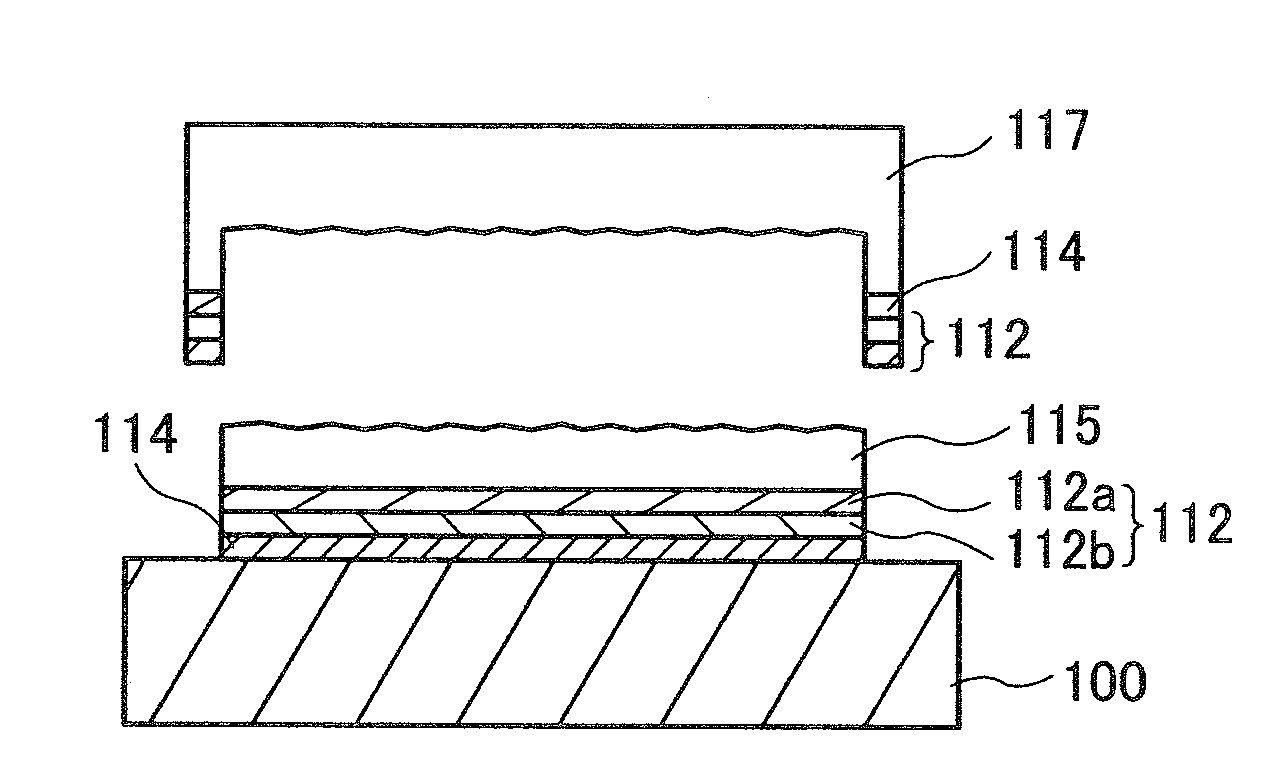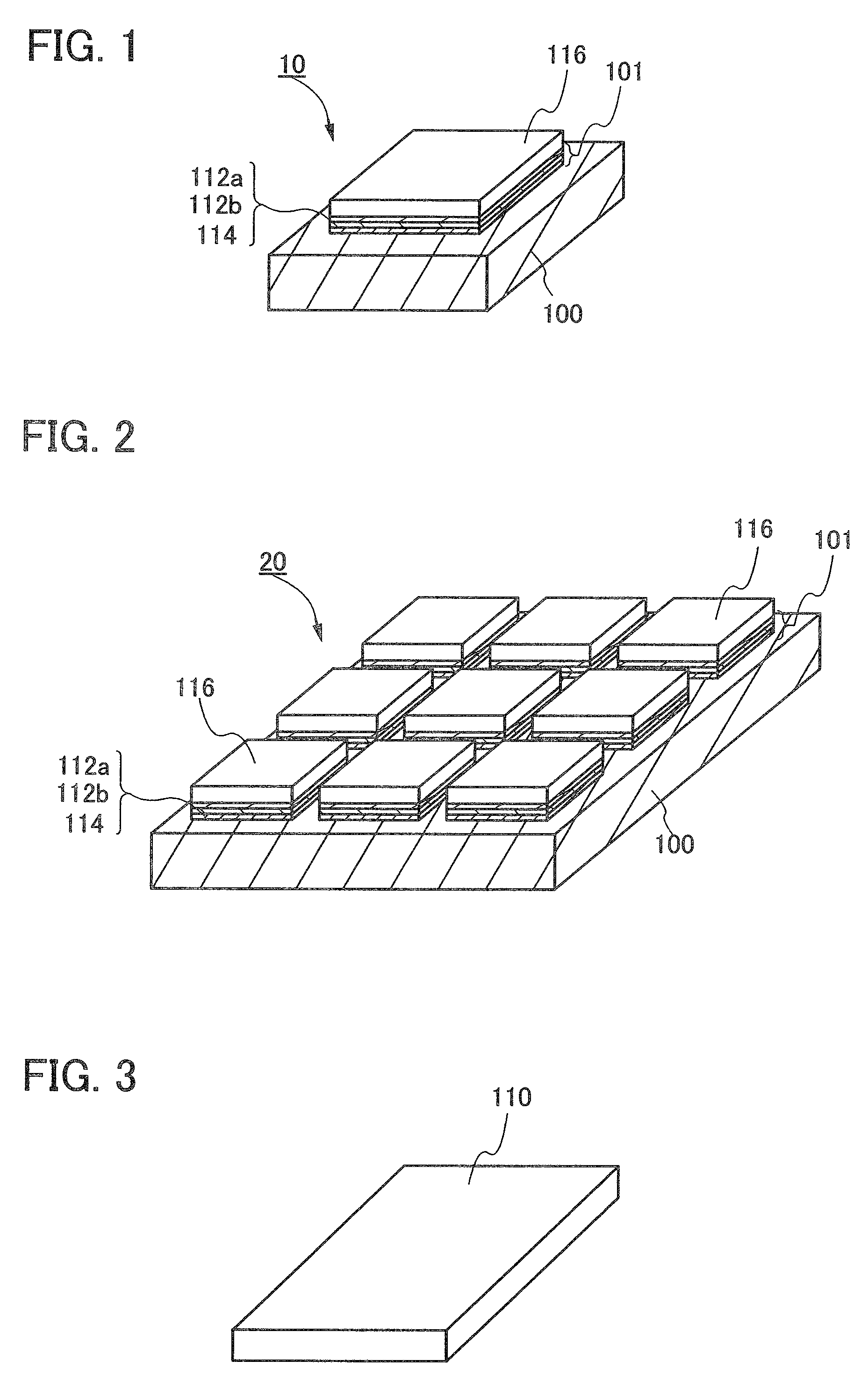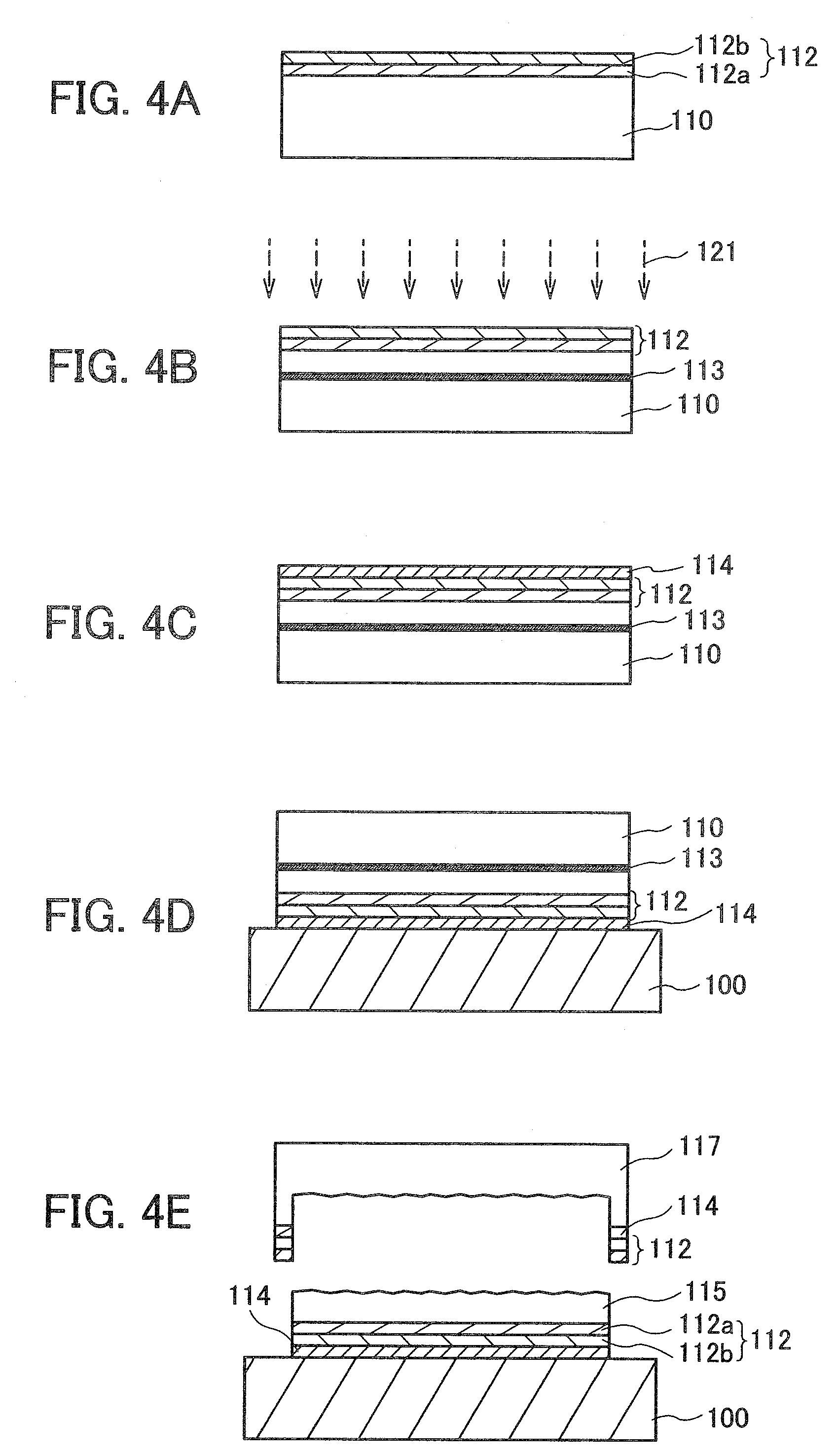Method for manufacturing semiconductor substrate and method for manufacturing semiconductor device
a technology of semiconductor substrate and manufacturing method, which is applied in the direction of semiconductor devices, semiconductor/solid-state device details, electrical devices, etc., can solve the problems of low heat resistance, glass substrate cannot be heated at a temperature which exceeds the upper temperature limit, and process temperature limitations, etc., and achieves high-performance effects
- Summary
- Abstract
- Description
- Claims
- Application Information
AI Technical Summary
Benefits of technology
Problems solved by technology
Method used
Image
Examples
embodiment mode 1
[0129]In this embodiment mode, a semiconductor substrate in which a single crystal semiconductor layer is fixed to a supporting substrate with a buffer layer interposed therebetween and a manufacturing method thereof will be described.
[0130]FIG. 1 is a perspective diagram which shows a structural example of a semiconductor substrate. In a semiconductor substrate 10, a single crystal semiconductor layer 116 is attached to the supporting substrate 100. The single crystal semiconductor layer 116 is provided over the supporting substrate 100 with a buffer layer 101 interposed therebetween. The semiconductor substrate 10 is a substrate having a so-called SOI structure, in which a single crystal semiconductor layer is formed over an insulating layer.
[0131]The buffer layer 101 may have a single-layer structure or a multilayer structure in which two or more layers are stacked. In this embodiment mode, the buffer layer 101 has a three-layer structure in which a bonding layer 114, an insulati...
embodiment mode 2
[0243]In this embodiment mode, a laser irradiation apparatus which can be used in an irradiation step of the laser beam 122 of FIG. 5A is described.
[0244]The laser irradiation apparatus of this embodiment mode has a laser, an optical system through which a laser beam generated by the laser passes, a stage for arranging an object, a gas ejection portion that is arranged between the optical system and the stage and ejects a nitrogen gas, a gas supply apparatus for supplying a gas to the gas ejection portion, and a gas heating apparatus for heating a nitrogen gas supplied from the gas supply apparatus.
[0245]The gas ejection portion includes an opening where a nitrogen gas is sprayed, a window through which a laser beam passes, and a frame provided with a cavity to which a nitrogen gas passed through a gas heating means is supplied. The gas heating means includes a heating element formed of ceramic.
[0246]A laser beam with which an object on the stage is irradiated passes through the opt...
embodiment mode 3
[0270]As an example of a manufacturing method of a semiconductor device using the semiconductor substrate 10, a manufacturing method of thin film transistors (TFTs) will be described in this embodiment mode, with reference to cross-sectional views of FIGS. 12A to 12D, FIGS. 13A to 13C, and FIG. 14. By combining a plurality of thin film transistors, a variety of types of semiconductor devices are manufactured. In this embodiment mode, an n-channel TFT and a p-channel TFT can be manufactured at the same time.
[0271]As illustrated in FIG. 12A, the single crystal semiconductor layer 116 over the supporting substrate 100 is processed (patterned) into a desired shape by etching, so that a semiconductor film 603 and a semiconductor film 604 are formed. A p-channel transistor is formed using the semiconductor film 603, and an n-channel transistor is formed using the semiconductor film 604.
[0272]To control threshold voltages, a p-type impurity element such as boron, aluminum, or gallium or an...
PUM
 Login to View More
Login to View More Abstract
Description
Claims
Application Information
 Login to View More
Login to View More - R&D
- Intellectual Property
- Life Sciences
- Materials
- Tech Scout
- Unparalleled Data Quality
- Higher Quality Content
- 60% Fewer Hallucinations
Browse by: Latest US Patents, China's latest patents, Technical Efficacy Thesaurus, Application Domain, Technology Topic, Popular Technical Reports.
© 2025 PatSnap. All rights reserved.Legal|Privacy policy|Modern Slavery Act Transparency Statement|Sitemap|About US| Contact US: help@patsnap.com



